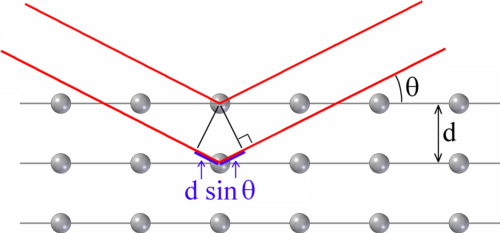Crystal surfaces show high reflectivity under special angles depending on the wavelength of the X-rays due to Bragg-reflection. Mirrors using Bragg-reflection to redirect X-rays are called crystal mirrors. These mirrors provide a rather large reflection angle, with a limitation to the wavelength due to the physical principle. Such crystal mirrors can be used to focus light when they are curved e.g. elliptically.

Fig. 1: Bragg reflection; when die optical path difference Δ=2d sinθ for a certain wavelength λ is a multiple of λ, the beams will interfere constructively.


